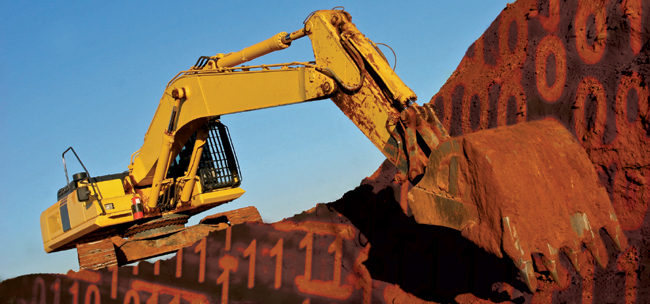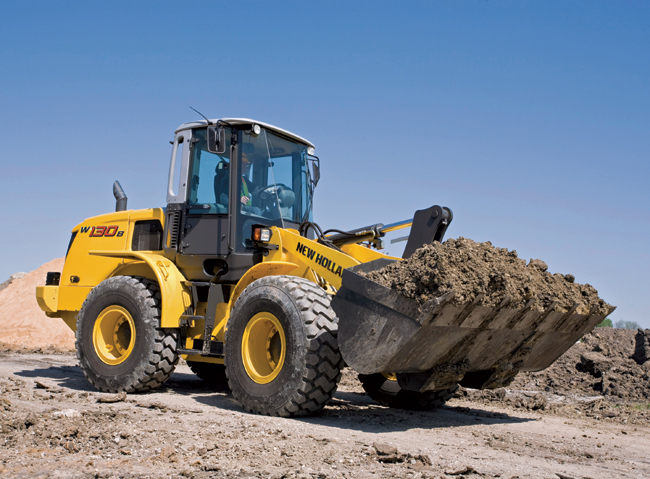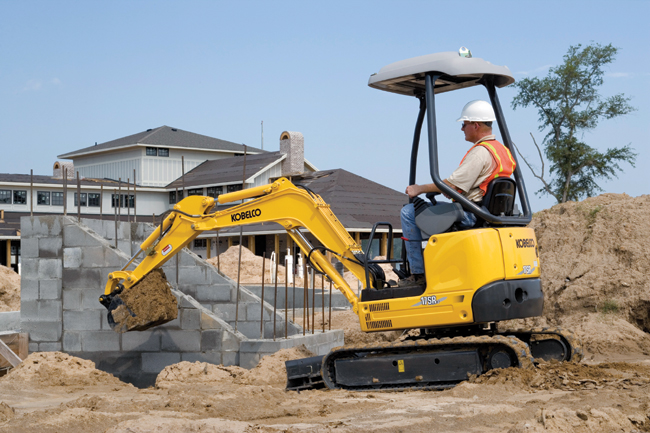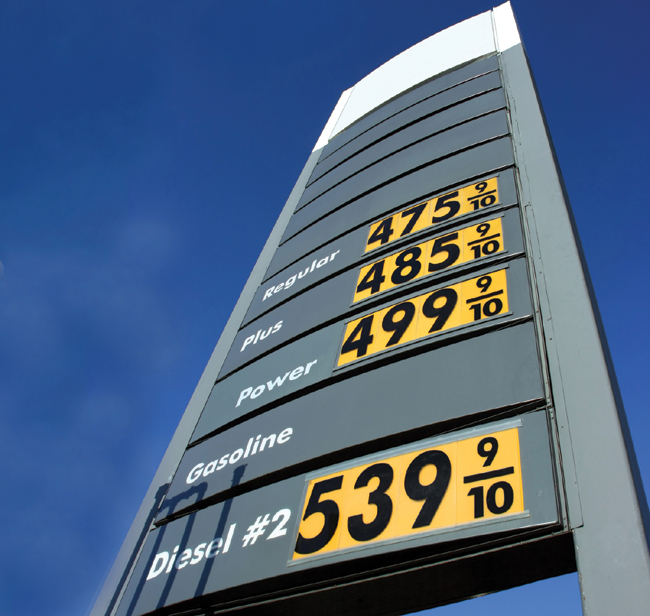The Return of the Investment
Added value has been on the tip of every manufacturer’s tongue since the economic downward spiral, and fleet management systems are leading the way toward increasing productivity. At first glance, fleet management can seem like a costly addition, and one that’s difficult to justify. It’s not a machine you can put to work or materials you can use on the jobsite. It’s information.

It’s how your machines are working on the jobsite. It’s about increasing efficiency and cutting costs. And in this challenging economic climate, you have to cut to gain profits.
The Challenge: You Can’t Manage What You Don’t Measure (Correctly)
Contractors face an interesting conundrum: Equipment usage from hour meter readings is used for job billing, service scheduling, budgeting equipment purchases and estimating work. However, most contractors will quietly admit that this information is inaccurate and out of date. Inaccurate in that the information is manually collected in the field and subject to a variety of mistakes such as fudging, hoarding practices, time cards and other gamesmanship. Not only that, but out-of-date information is manually collected and delivered one to two weeks behind real time.
Savings come about from increased fleet utilization and optimization, more accurate jobsite billing, reduced equipment idling, real time asset reallocation, decreased service and repair costs and reduced insurance premiums from accurate data procured by fleet management systems.
Wireless asset monitoring involves three basic components:
- A transponder unit mounted on the asset to collect data;
- A communication medium to transmit the data;
- And a user interface, normally an Internet software package, in which the manager views the data and converts it to useful information and reports.
The transponder unit is typically about the size of a large ashtray and houses the GPS receiver and wireless radio. Wireless networks, the same used by mobile phones, provide communication between the transponder on the machine and the manager at the computer. The unit literally calls information such as location, on/off status, usage data (on vs. working vs. idle time) and critical updates pertaining to machine health and unauthorized use directly from the asset to the software, cell phones, PDAs and e-mail in real time. Additionally, the manager may call the unit from the software and request an update of this data or enable other functions such as remote disabling of the asset, anytime with a click of the computer mouse.
The Solution: What Gets Measured Correctly Gets Done
Running an analysis quarterly, monthly, annually or whenever your budgeting needs arise of utilization by asset type based on actual run time makes it easy to see where your fleet has excess and where you may need to add a machine.

For example, you have 30 dozers in your fleet and requests are coming in for additional ones. A quick utilization report shows you have 15 dozers running at 80 percent for the last quarter, 10 dozers at 50 percent and five dozers at 20 percent. The reality is that you don’t need more dozers. In fact, you can shed a few to bring up the overall production of that asset class within your fleet — which also frees up the capital you had tied up in non-productive machines.
Some wireless fleet monitoring systems will empower you to designate boundaries on their mapping software that you label as your jobsites. As assets move into those areas, they are assigned to the job and as they move elsewhere, they are reassigned automatically without manual entry. This allows you to run jobsite reports to see how your assets are actually working, which, in turn, creates accountability at the jobsite level.
No longer can machines be hoarded on jobs, while a similar asset is rented on a project down the road. Now you simply reallocate the machines within your own fleet first, before looking to rent another machine.
Additionally, any usage fudging is brought to light and the job is billed properly for the actual work performed by the equipment. Often times, this accurate data improves jobsite billing of 10 to 30 percent.
The hour meter is one performance metric, but it doesn’t differentiate between on time, working time and idling time. Fortunately, a wireless monitoring system does. The obvious benefit — turning off the machine when it idles excessively, by implementing company-wide idling goals and measuring them frequently, will dramatically cut your fuel bill in the short term and also give you a realistic usage barometer for that machine.
Now, you can schedule service based on the true working time meter, not off the hour meter on the machine — which means you will reduce the number of preventive maintenances required annually. Consider a service interval at 250 hours and a machine with 30 percent idle time, equating to 75 hours of idling per service. This means that every fourth preventive maintenance servicing performed is due to the idling hours alone, which is not a true indicator of usage. As you reduce your idling or simply schedule service off the actual working meter, you extend the preventive maintenance interval and decrease the number required. Continuing with this example, if you ran your service strictly off the true working meter then you would completely remove every fourth preventive maintenance servicing and its associated costs.
Using a wireless monitoring system provides a proactive service scheduling function (a report showing what is coming due), as well as a reminder if an asset is not serviced on time, thus preventing any from falling through the cracks. The result is fewer failures and thus less equipment downtime — reducing repair costs nearly 15 to 40 percent.
Most wireless asset monitoring systems also double as theft protection systems with such features as nightly curfews, real time theft alerts, immobilization techniques, remote disable, geofences, etc. Ask your insurer what break they will give you for theft protection. If they can’t justify it, then be sure to remind them that there is at least one underwriter out there offering at least 25 percent discounts on premium and a $10,000 theft deductible to contractors who invest in this technology.
Shopping Around
A quick Internet search for “construction equipment monitoring” or “equipment monitoring system” turns up dozens of results, so how do you select the right one for you? Here are some important factors to consider:
Provider background and support
Scary but true: The 2007 ICUEE trade show had 12 vendors selling this technology and ICUEE 2009 had only three. Now more than ever, make sure your provider has been in this business for years and has the capacity to support you through the product’s life. Is the product and company proven or are you one of the initial guinea pigs? Are you buying from the OEM, dealer, re-seller or another channel? Always be sure to identify where technical support and/or training will come from and if there is an additional charge for those functions.

Cost
The transponder unit will run between $400 and $1,200 and quantity discounts are often available. The monthly communication should be between $15 and $40 per unit per month. Some manufacturers will levy an activation fee, annual maintenance fee, multiple user fee and/or software license fee so be sure to ask about these at the start.
Long-term contract
Most providers require an airtime contract extending from anywhere between one to five years, similar to a mobile phone agreement. There are a few no contract manufacturers who bill month to month, giving you the option to stop service at any time.
Automated delivery of reports
Most savings result from evaluation of activity reports. Does this mean you need to log on and run these reports daily, weekly, monthly, etc,. or can you automate this process? A few systems empower you to set up delivery intervals and designate the person(s) to receive it, as well as the time (i.e. at 6 a.m. Monday morning) the shop superintendent will get the upcoming service report in his e-mail inbox.
Fleet coverage
Even if you don’t plan to track both your trucks and equipment initially, does the provider offer an integrated system for both? You may start with your equipment and find truck tracking to be a logical next step. Will the same vendor provide both systems or will you be using one vendor for equipment tracking and another for your on road assets?

Armed with the real utilization information from previous jobs, your estimators will now map that to future bids. Rather than estimating, they are using actual numbers from identical work to make their bids more competitive and profitable.
Too good to be true? Consider the case of a customer coming up on their one year anniversary with DPL America technology, having installed nearly 500 units on their equipment fleet.
That investment has yielded a savings in excess of $3 million within 10 months from the exact same items discussed above, exponentially outweighing the cost to deploy. Now is the time to take a closer look at your operations to squeeze every dime and penny out of your hard work. Contractors fighting competition, plummeting profits and increasing costs need all the help they can get.
Tony Nicoletti is the Director of North American Sales for DPL America, a leading provider of GPS based asset tracking solutions with a 10-year history of innovation.
Day-To-Day
By Jason Morgan
With mountains of data compiled by fleet management systems, it’s easy to feel overwhelmed with info. Luckily, today’s best systems let you be as involved as you want to be and adapt to the way that you like to work.
“First, you need to understand what the underlying business problems are for a given contractor, and then you can tailor the use of the system to give them the quickest return on their investment,” says Steve McGough, HCSS Chief Operating Officer. “If they have concerns, and the new system does not address them quickly, the implementation will lose momentum.”
The size of your company will determine how many software licenses you’ll need. These licenses give a user access to the system. A small company may only need a single license, whereas larger companies may need multiple licenses across multiple business units. The key here is scalability. You need to choose software that is easy to use when you are just starting out, yet can grow with you no matter how big you get.
Once you have the system up and running, integrating it into your daily operations is a must. The key to fleet management systems is to have more than just your fleet manager using it.
“Borg Fleet, for example, is an all-encompassing fleet management solution and as such, fleet managers, equipment managers and accounting use Borg Fleet,” says BorgSolutions COO Michelle Borg. “The fleet manager uses it to keep track of all moveable assets in terms of location, usage, maintenance, etc. The equipment manager uses it to see how up to date their parts inventory is and order restock, and accounting uses it for purchase orders and reporting.”
Once you’re up and running, it might be some time before you have that “ah ha!” moment. After you’ve saved money the first job you complete with your new software, the return-on-investment is clear.
“It always hits home when the contractor can say to himself, ‘Hey, my new system just saved me $5,000,’” says McGough.
After you’re more comfortable with the program, you’ll start to peel away at the layers of functionality.
“The ‘ah ha’ moment often comes [with Borg Fleet software] when the artificial intelligence engine kicks in — when an item that requires immediate attention is flagged for the user and action items, including creating work orders and placing inventory purchases, are set into motion at the push of a button,” says Borg. “Borg’s artificial intelligence based on asset usage patterns and parts preference, accurately predicts up to 90 days in advance when service will be needed. Not only does it predict and flag for the fleet manager, but it also tells him what parts are needed, if he has them in stock and populates both work and purchase orders as needed.”
Even when everything is running smoothly, additional follow-up training is a must. Attending user’s conferences or bringing trainers onsite to work with your employees is the best way to take your operations to the next level.
“Don’t be afraid to identify milestones and ask the software vendor to commit to these with you,” says McGough. “Any good software company should be ready and willing to help you achieve your goals.”
Fuel and Maintenance Management
By Michael J. Oleniczak
As fuel costs continue to fluctuate, (anyone remember $4.50 per gallon gas in 2008?), utility fleet managers must continuously look for ways to manage their fuel purchasing and maintenance costs.

Fleet cards, like those offered by the U.S. Bank Voyager Fleet System, are specialty cards used by drivers to purchase fuel and vehicle maintenance services and provide a good way for utility fleet managers to control fuel and maintenance purchases, which are typically the top two operating costs for a fleet. It is important to note that not all fleet cards are alike.
When selecting a fleet card, fleet managers should consider a few key criteria — card controls, reporting functionality and card acceptance.
A good fleet card program will allow fleet managers to have the ability to customize every card issued to a driver, vehicle and/or organization. To help manage costs and eliminate fraud and card abuse, a number of purchasing restrictions should be made available to fleet managers. These controls include:
- Restricting the purchases on a fleet card to fuel only or fuel and other (i.e. vehicle maintenance) Limiting purchase activities by time-of-day, day-of-week;
- Setting transaction limits based on dollar amounts per day, week or month;
- Limiting number of transactions per day, week or month;
- And setting hard or soft decline limits.
Exceeding these thresholds would cause the card to decline the transaction at the point-of-sale and possibly instructing the retailer to call for authorization to allow one additional transaction.
By allowing tighter controls on all fleet card transactions, fleet managers can determine how, and more importantly, when fleet cards will be used. This will help prevent drivers from making unauthorized purchases while on or off the clock.
It is not only important to place purchase restrictions on fleet card usage, but it is equally important to have access to purchasing activity data via online reports. Purchasing data — merchant name and address, purchase amount and tax, time and date, fuel type and cost per gallon and vehicle odometer reading — from fleet card transactions delivers a complete picture of dollars spent, suppliers used, where, when, how, and for how much. This lets the fleet manager utilize driving trends to better manage fleet operations and budget for fleet expenditures.
Lastly, fleet managers need to know that their drivers’ fleet cards will be accepted everywhere. Whether the driver is going on a local, regional or national level job, there is nothing worse than a driver being stranded during a routine call because the fleet card being used is not accepted at a fuel or maintenance location.

Comments are closed here.